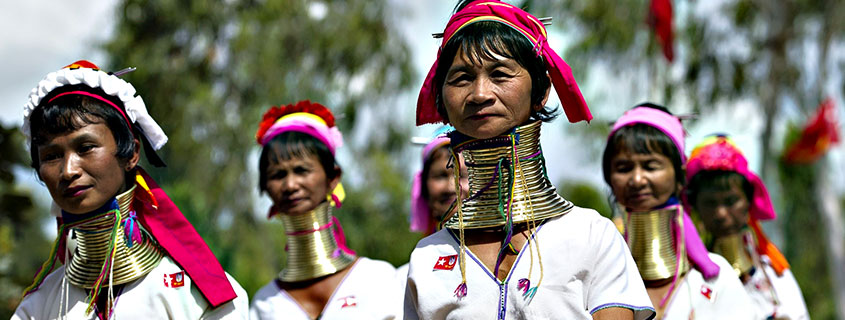
Kayah State is a state of Myanmar. Situated in eastern Myanmar, it is bounded on the north by Shan State, on the east by Thailand’s Mae Hong Son Province, and on the south and west by Kayin State. It lies approximately between 18° 30' and 19° 55' north latitude and between 94°40' and 97° 93' east longitude. The area is 11,670 km² (4,530 sq miles). Its capital is Loikaw. The estimated population in 1998 was approximately 207,357, according to UNICEF. It is inhabited primarily by the Karenni ethnic group, also known as Red Karen or Kayah, a Sino-Tibetan people.
Loikaw
Loikaw is the capital of Kayah state, just one hour's flight from Yangon, but it may take much longer by road. As everyone may know well by now, Myanmar abounds with pagodas, temples, stupas, caves, verily sacred landmarks of Buddhism the predominant faith of the majority of the populace. In as much as these revered landmarks are places of worship, they also provide interesting insights into Myanmar's long history, its culture, art and architecture, literature and contemporary scenes of its long past. The famous religious landmark of Loikaw is the Thiri-Mingalar Taung-kwe Pagoda Hill, scenically built on a hillock overlooking the vast expanse of the environs. You can watch desolately at the pilgrims and enjoy the marvelous landscape form the top.
Thiri Mingala Hill (Taunggwe) Pagoda
The cluster lies in the south of Loikaw, Kayah State, atop Thirri Mingala Hill, that has nine peaks on nine broken hills. It was called Mingala Hill, Phawmye in Kayah, Taunggwe in Myanmar, and Loi Pha Phat in Shan.
It is 387 feet high. There are pagodas on the nine hillocks named Pyilone Chantha, Shwe Yattaung, Shweyin-aye, Kyauk Thamban, Aung-dawmu, Sutaungpyi, lower Kyaikhtiyo, upper Kyaikhtiyo and Shwe-Pyi-Aye. Pyilone Chantha Pagoda was built in 1295 (1933) to be 36 feet high and 27 feet in girth. Shwe Yattaung Pagoda was built in 1257 (1895) to be 20 feet high and 15 feet in girth. Shwe Yin-aye Pagoda was built in 1275 (1913) to be seven feet high and five feet and six inches in girth. Kyauk Tbamban Pagoda was built in 1276 (1914) to be four feet and six inches high and three feet in girth. Aungdawmu Pagoda was built in 1291(1929) to be eleven feet and six inches high and ten feet nine inches in girth. Sutaungpyi Pagoda was built in 1291 (1929) to be eleven feet six inches high and nine feet six inches in girth. Lower Kyaikhtiyo Pagoda was built in 1295 (1933) to be five feet and ten inches high and five feet ten inches in girth. Upper Kyaikhtiyo Pagoda was built in 1296 (1934) to be five feet and six inches high and five feet in girth. Shwe Pyi-aye Pagoda was built in 1312 (1950) to be seven feet high and six feet and ten inches in girth.


